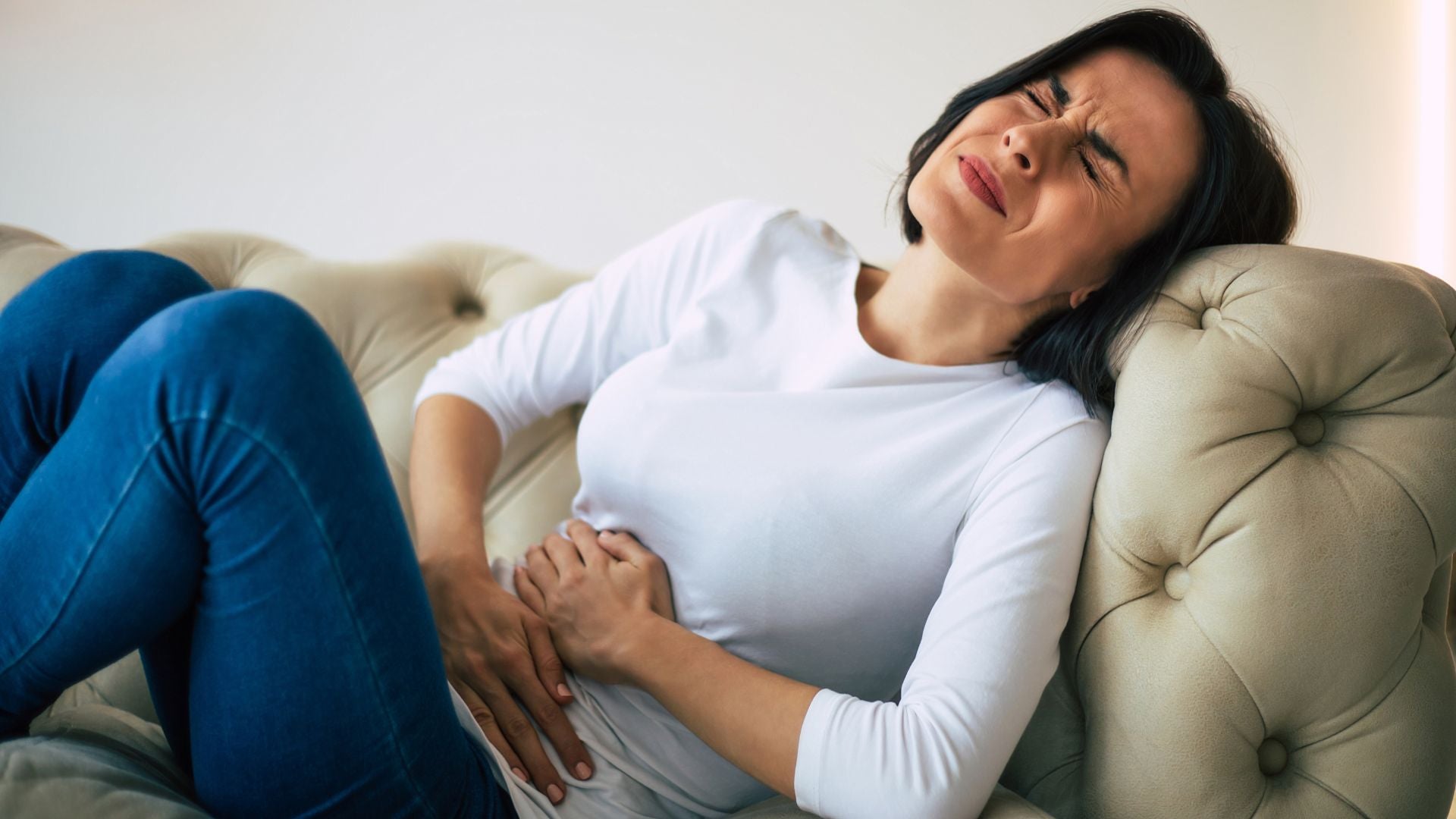For many women, endometriosis is a painful and often frustrating condition that tends to show up in their 20s or 30s, but what many don’t realise is that it can continue (or even appear for the first time) well into your 40s, 50s and beyond.
And no, menopause doesn’t always make it disappear.
Let’s break down what endometriosis actually is, why it may continue post menopause, and how you can support your body naturally at any stage.
What is Endometriosis?
Endometriosis occurs when tissue similar to the lining of the uterus (womb) grows outside of it, often on the ovaries, fallopian tubes, bowel or bladder. This tissue responds to hormones just like your uterine lining does, meaning it can thicken, bleed, and cause inflammation with each cycle.
Over time, this can lead to scarring, adhesions (tissue sticking together), and chronic pain.
What Causes Endometriosis?
While there’s still no single, proven cause, researchers believe a few key factors are involved:
-
Oestrogen dominance (too much oestrogen, or poor clearance)
-
Immune dysfunction
-
Chronic inflammation
-
Genetics
-
Exposure to endocrine-disrupting chemicals
These all play a role in how the body processes hormones, clears tissue, and responds to inflammation.
Can Endometriosis Continue After Menopause?
Yes, and this surprises a lot of women. While periods may stop, oestrogen doesn't disappear entirely, especially if you're on HRT or have higher body fat (which produces its own oestrogen).
Many women report ongoing symptoms such as:
-
Pelvic pain or discomfort
-
Bloating and digestive issues
-
Lower back pain
-
Fatigue or brain fog
-
Pain during intercourse or bowel movements
These symptoms are often brushed off as “just menopause,” but for some, they’re signs of lingering or even reactivated endometriosis.
Still in Your Reproductive Years?
If you’re in your 20s, 30s or early 40s and still cycling, endometriosis can be even more disruptive — affecting your periods, fertility, energy levels, mood, and everyday quality of life.
Painful periods, fatigue, digestive issues, and hormone driven symptoms like mood swings or irregular cycles could all point to underlying endo or hormonal imbalance.
Supporting your hormones early, balancing oestrogen naturally, and managing inflammation can make a real difference in how you feel month to month and help prevent things from getting worse later on.
Natural Ways to Support Your Body
While conventional treatments like hormone therapy or surgery are common, many women are turning to natural strategies to help ease symptoms and improve their overall wellbeing. These approaches can support the body’s own healing processes and are especially helpful if you’re looking for gentle, hormone free options.
1. Lower Inflammation
Chronic inflammation is a big driver behind the pain and progression of endometriosis. Focusing on an anti inflammatory diet — rich in colourful vegetables, oily fish, turmeric, ginger, and olive oil — can help calm the body. Cutting down on processed foods, sugar, and alcohol also makes a difference.
2. Support Oestrogen Balance
Endometriosis is heavily influenced by oestrogen levels. If your body is producing too much, or not clearing it efficiently, symptoms can worsen. Supporting liver health (through leafy greens, cruciferous vegetables, and proper hydration) and ensuring regular bowel movements can help your body process excess hormones more effectively.
3. Strengthen Gut Health
There’s a strong connection between gut health and hormone balance. The gut helps eliminate excess oestrogen, regulates the immune system, and manages inflammation. A fibre rich diet, fermented foods like kefir or sauerkraut, and plenty of water can improve gut function and support hormonal health.
4. Boost Magnesium Intake
Magnesium is involved in over 300 processes in the body, including muscle relaxation, nervous system function, and hormone regulation. It can help reduce cramping, ease tension, improve sleep, and even support mood. Magnesium rich foods include dark leafy greens, nuts, seeds, legumes, and whole grains.
5. Minimise Toxic Exposure
Many everyday products, from plastics to cosmetics, contain endocrine disrupting chemicals that mimic oestrogen in the body. Reducing exposure to these chemicals by choosing fragrance free, paraben free, and BPA free products can help support natural hormone balance.
When to Seek Help
While natural strategies can offer relief, endometriosis is a complex condition and it deserves proper attention.
If you're experiencing any of the following, it’s important to speak with a GP or women’s health specialist:
-
Persistent pelvic pain, even outside of your period
-
Bloating, fatigue, or bowel issues that don’t improve
-
Pain during sex or while going to the toilet
-
Periods that are unusually heavy, irregular, or painful
-
Ongoing discomfort after menopause
You know your body better than anyone, so if something feels off, trust your instincts. Don’t let anyone dismiss your symptoms as “just part of being a woman” or “normal menopause.” They’re real, and they matter.
Everyday Lifestyle Tips to Support Endometriosis
Managing endometriosis often means taking a whole body approach, from what you eat to how you move and rest. Here are a few gentle, sustainable habits that can make a real difference over time:
-
Prioritise rest and sleep. Chronic pain is exhausting — give your body time to heal.
-
Move your body regularly. Gentle exercise like walking, Pilates, or yoga can reduce inflammation and ease stress.
-
Manage stress. Endometriosis and stress feed off each other. Breathing exercises, journalling, or even 10 quiet minutes in the garden can help.
-
Eat nourishing, whole foods. Focus on fresh, colourful meals and cut back on foods that inflame or disrupt hormones (think sugar, alcohol, processed snacks).
-
Track your symptoms. Keeping a simple diary of your pain, mood, or cycle patterns can help you spot triggers and share more clearly with your practitioner.
Signs of Endometriosis
Recognising the signs of endometriosis early can help you seek relief sooner. Look out for:
- Severe menstrual cramps that worsen over time
- Pain during intercourse
- Heavy or irregular periods
- Chronic pelvic pain outside of menstruation
- GI issues such as bloating, constipation or diarrhea around your cycle
Endometriosis Diagnosis
An accurate endometriosis diagnosis often requires:
- A detailed symptom history and pelvic exam
- Imaging tests like transvaginal ultrasound or MRI
- Laparoscopy (the gold standard) to visually confirm implants
- Blood markers (e.g., CA-125) can support but not replace imaging
Frequently Asked Questions
What causes endometriosis?
Does endometriosis affect fertility?
How to diagnose endometriosis?
Can endometriosis cause weight gain?
Is endometriosis inherited?
Final Thoughts
Whether you’re still cycling, approaching menopause, or well past it, endometriosis can still affect your daily life. But you don’t have to just live with it.
Natural strategies like reducing inflammation, balancing hormones, and supporting your gut can give you back a sense of control and relief.
If you’re struggling with ongoing symptoms, listen to your body. Support is available — and you deserve to feel better.






